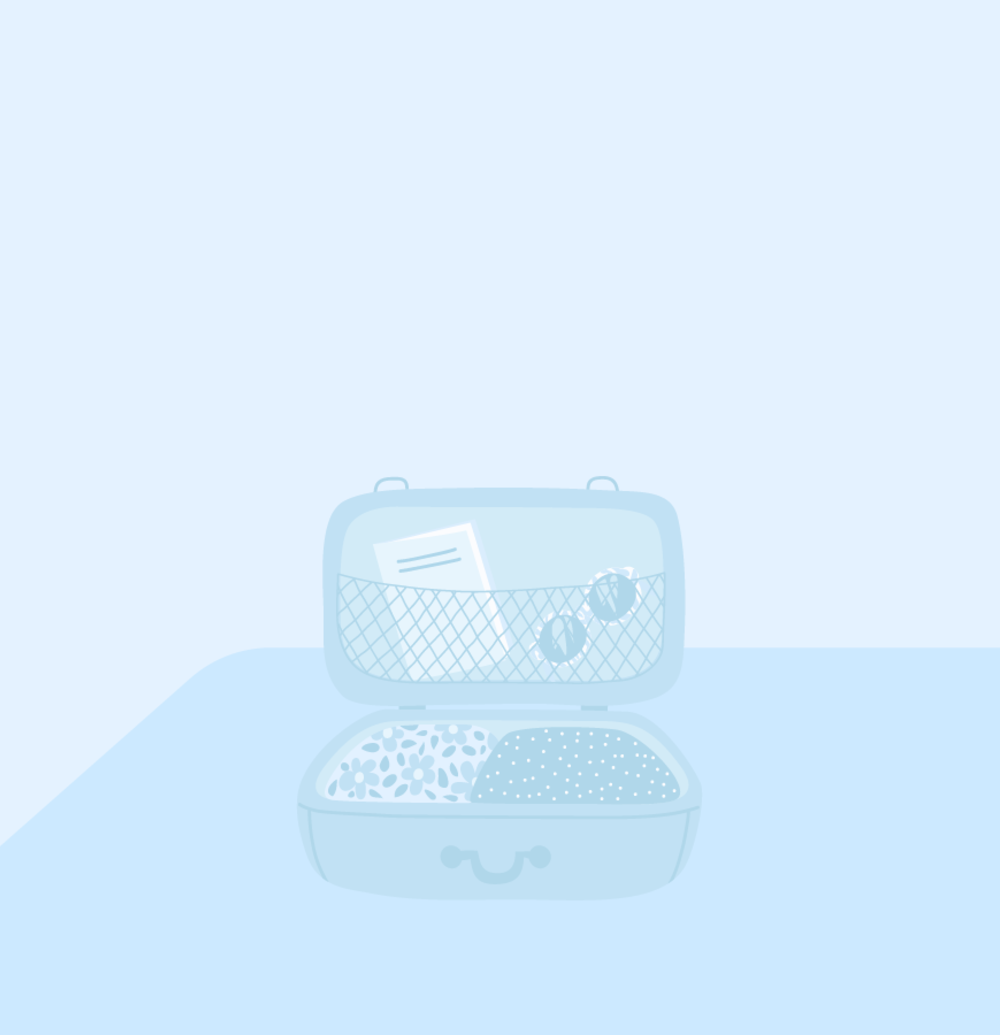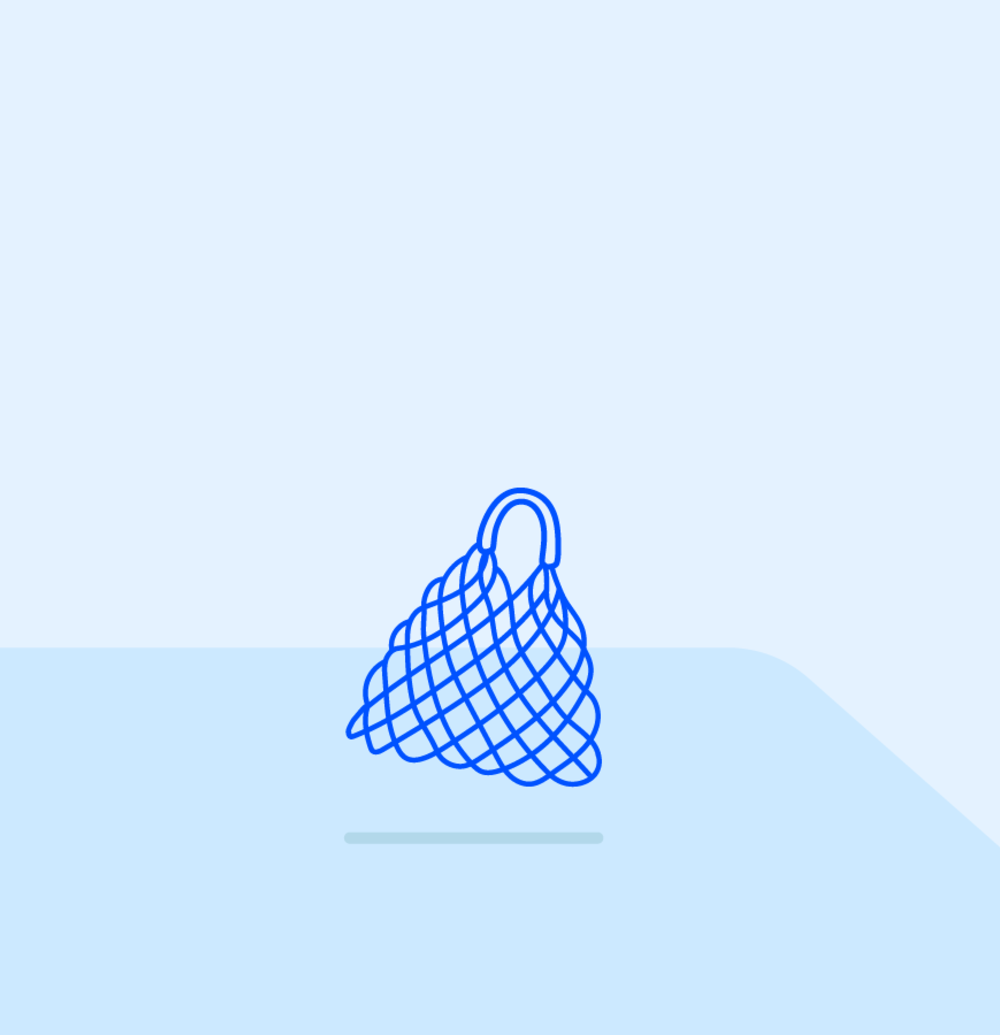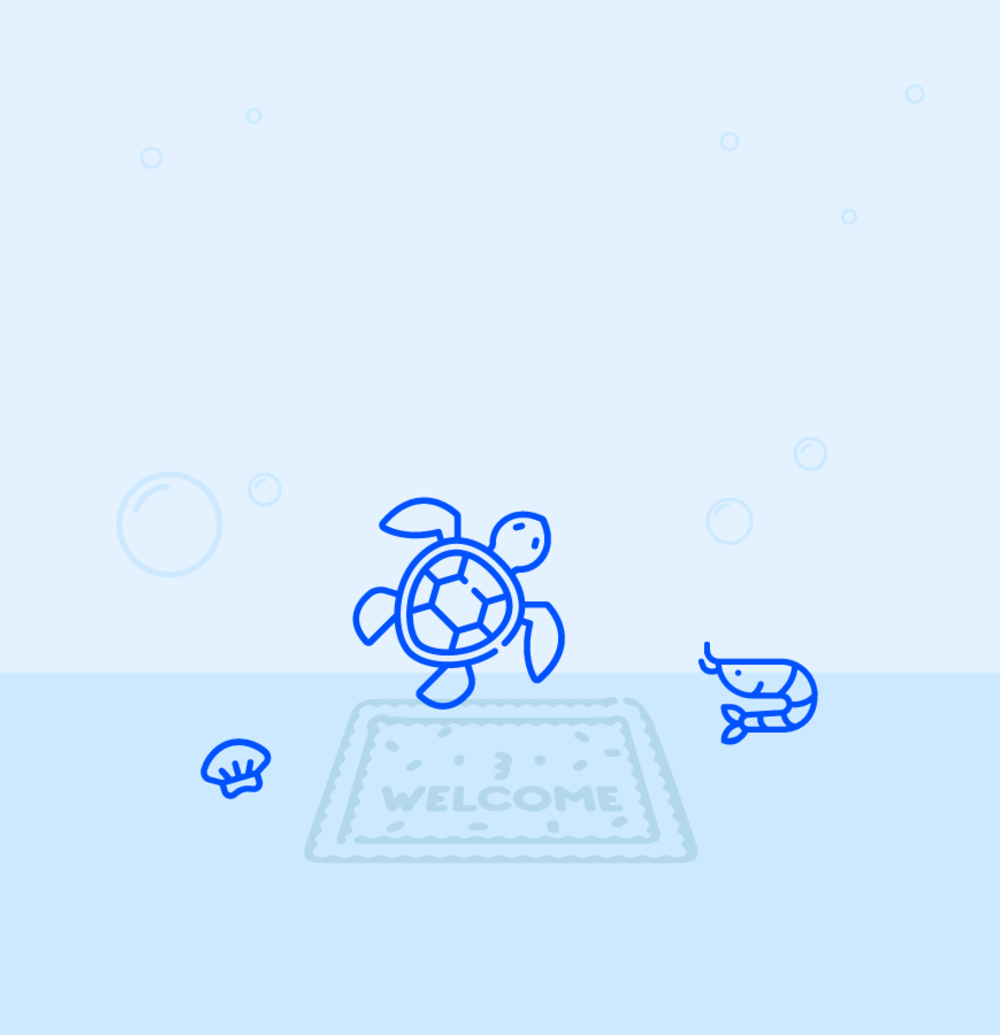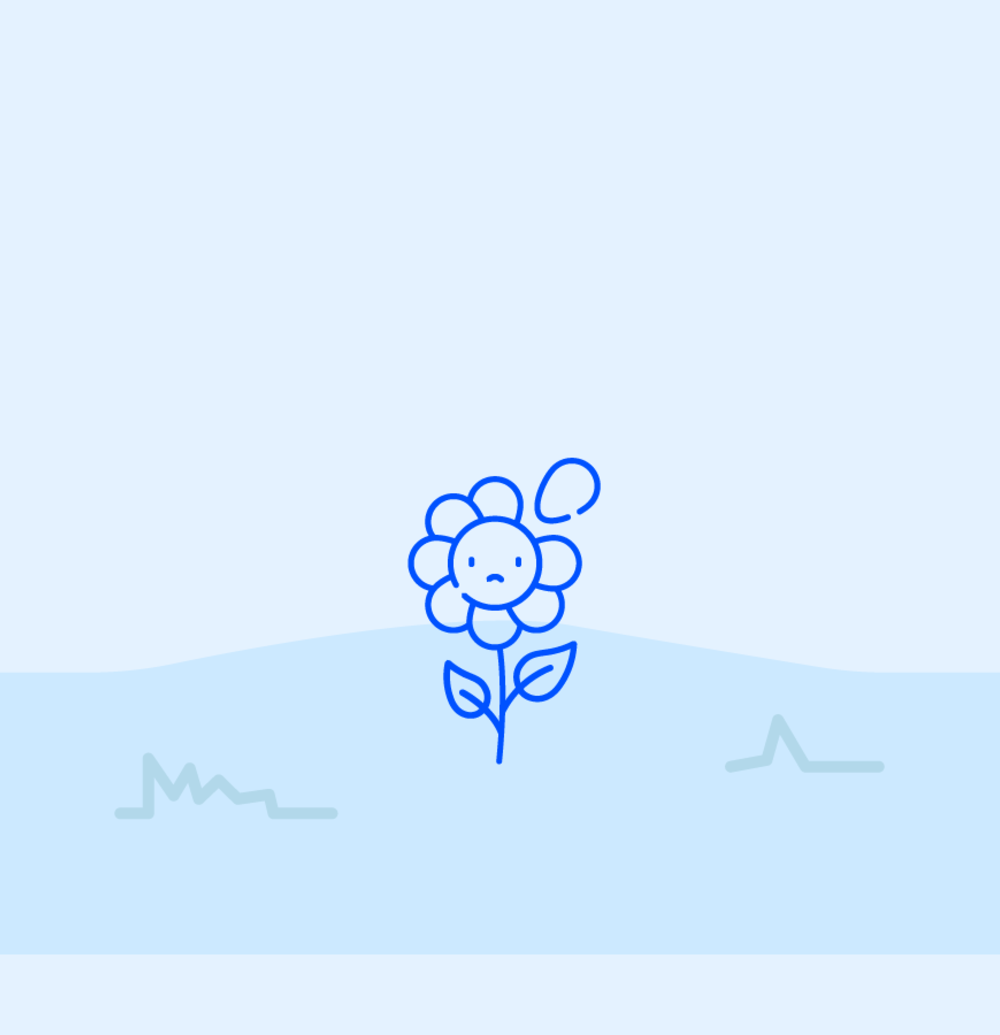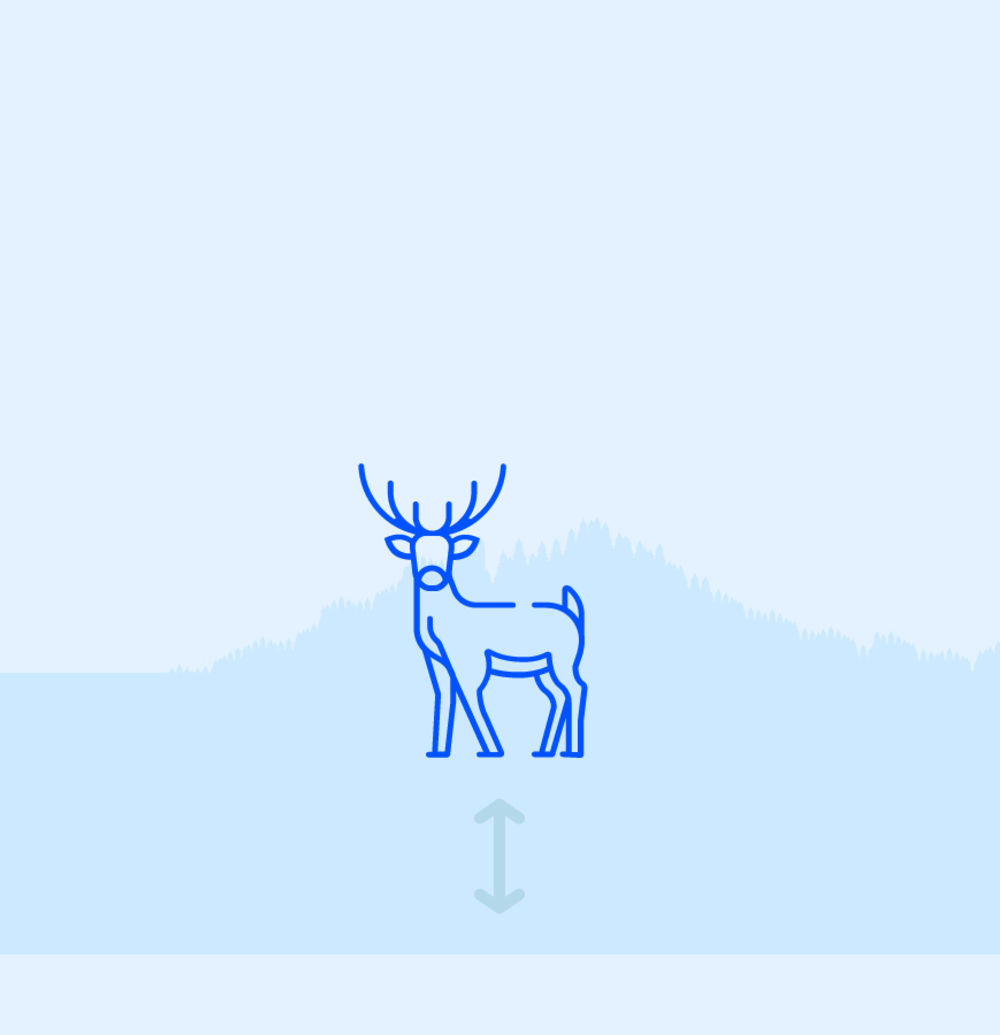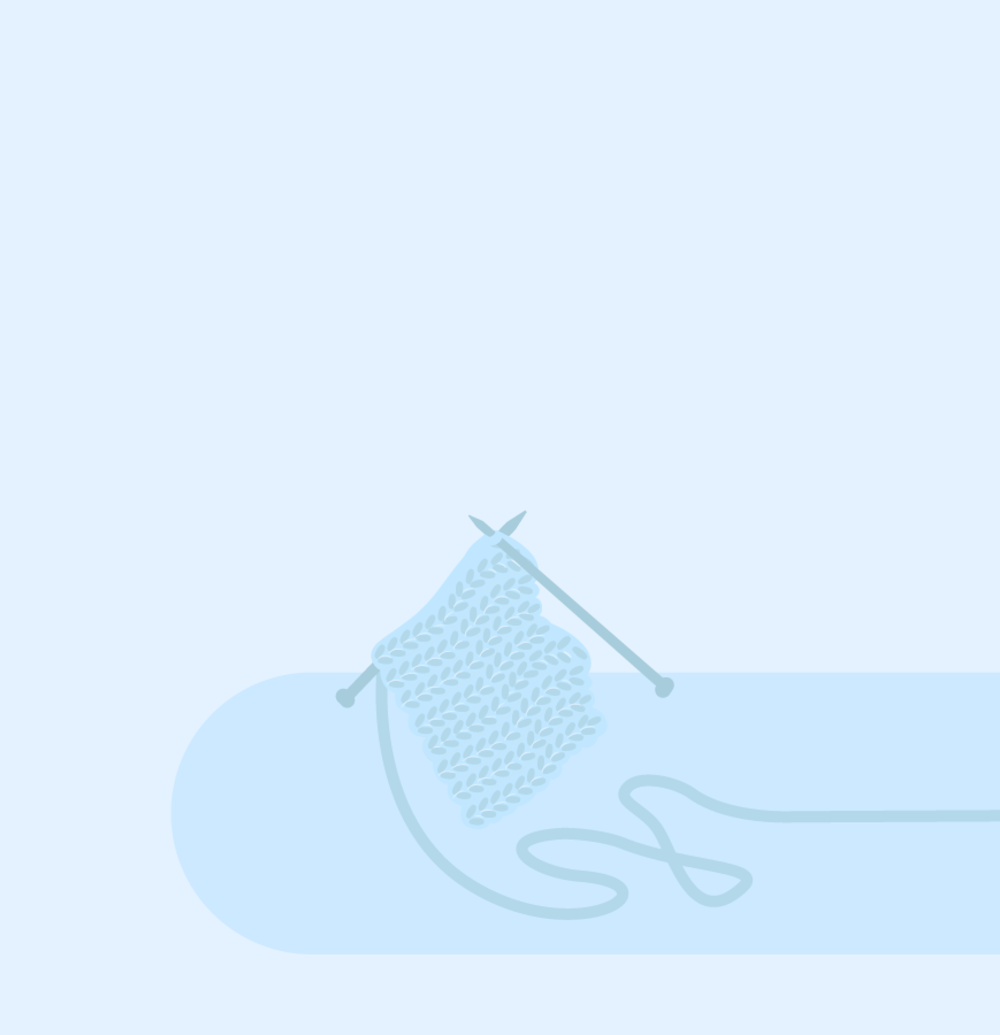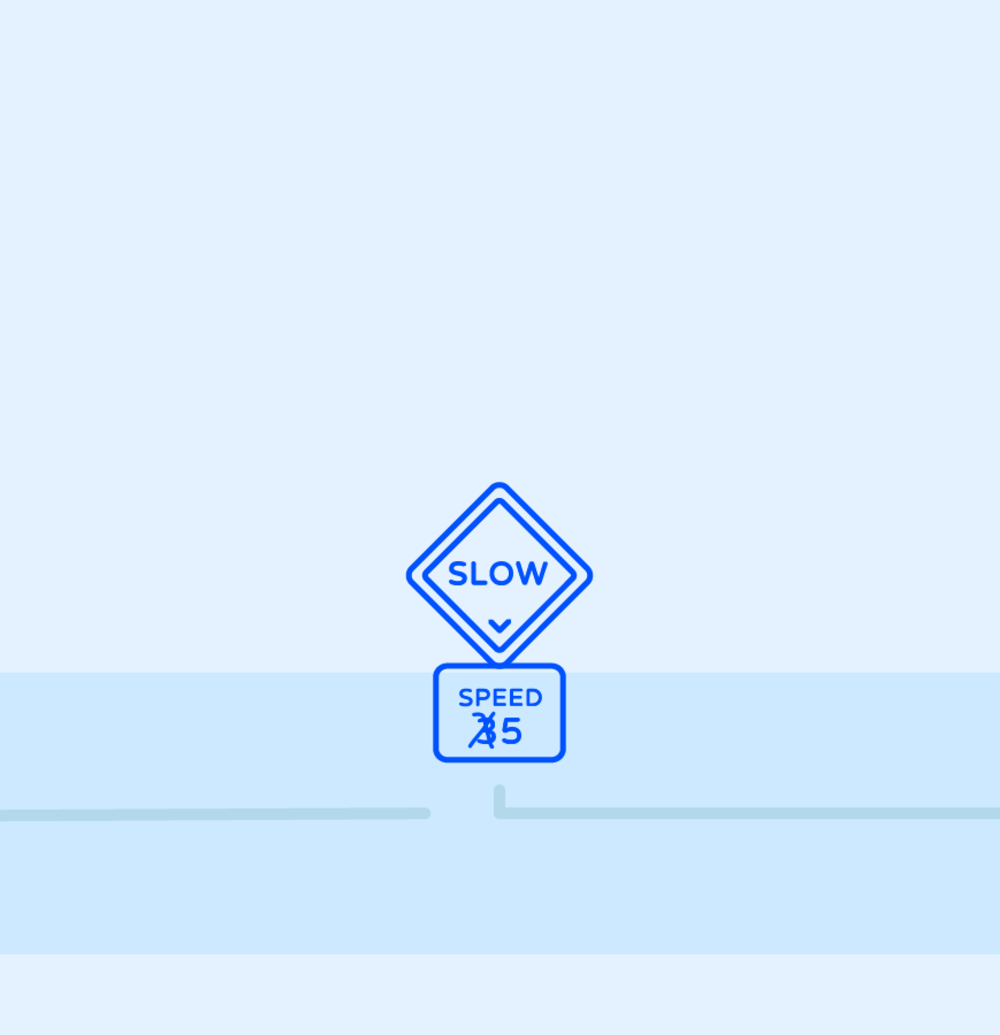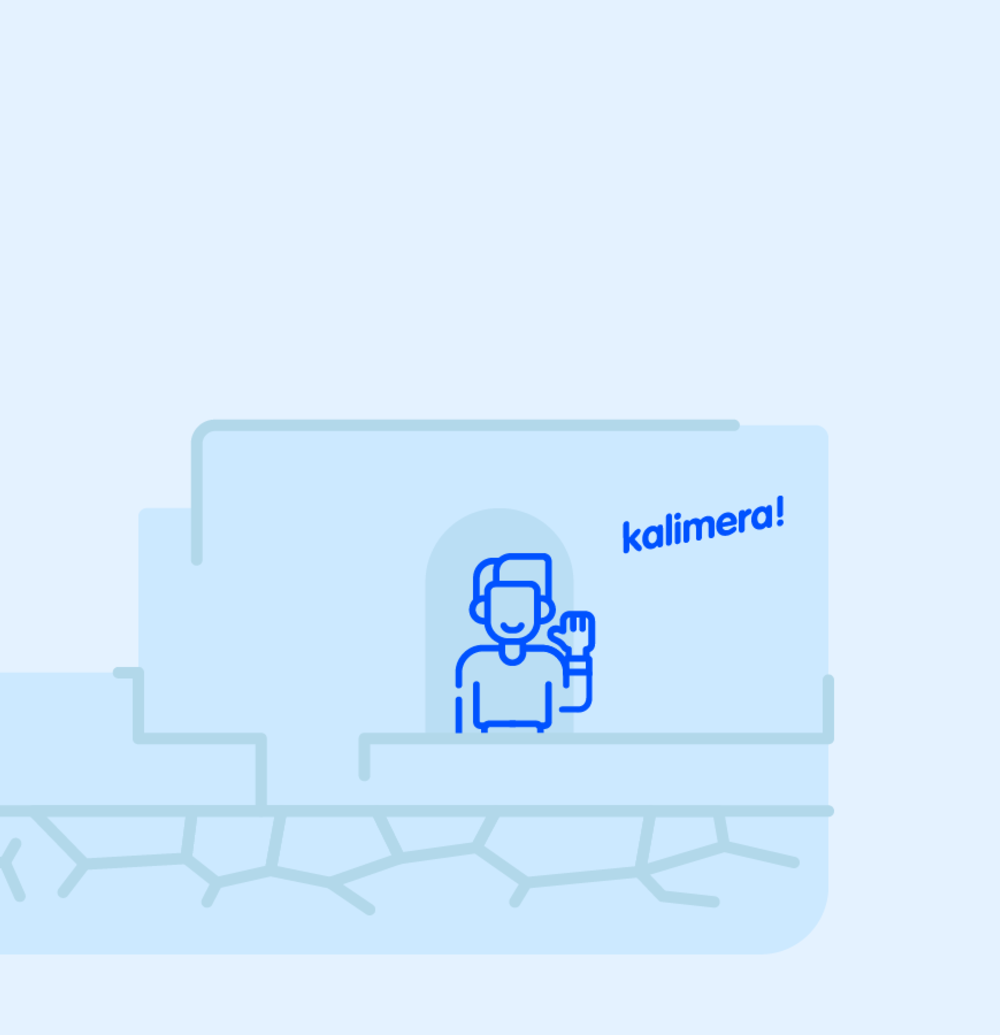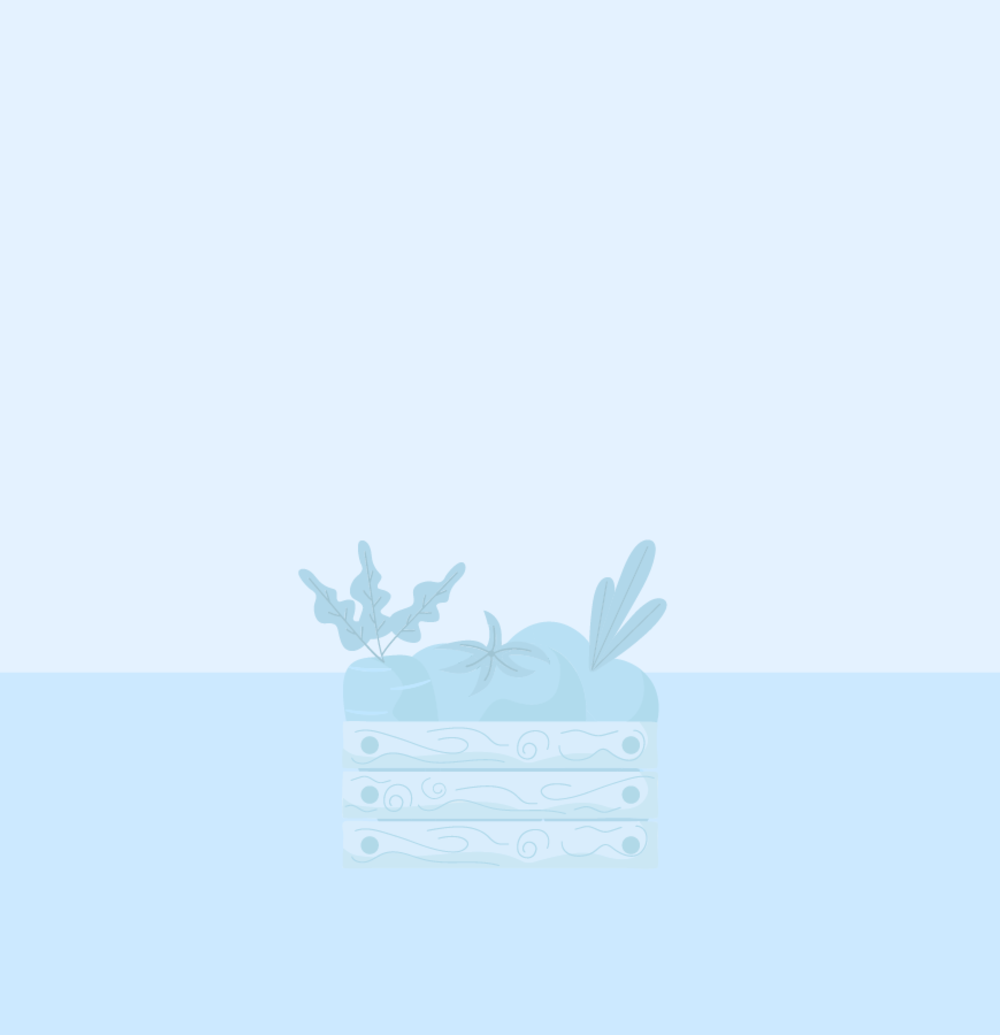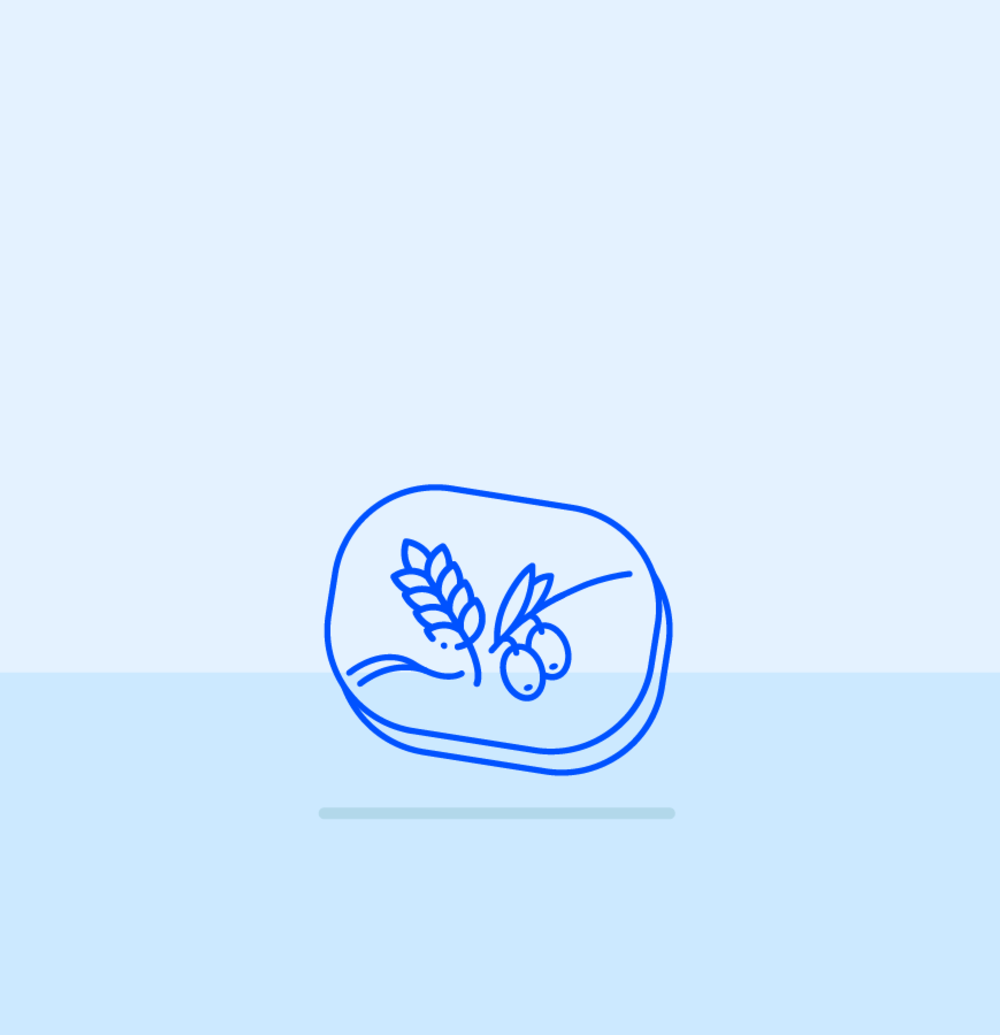Corfu is one of those islands that has it all: history & culture, beaches, villages, great food & drink... the list goes on. But when you've got it all, it's inevitable that everyone will want a piece of you. And that can come at a price for any destination.
So this guide of sustainable travel tips for Corfu is for the responsible traveller. It’s designed to help you decide when and where to go, what eco-friendly travel activities are available when you get there and how to leave as small an environmental footprint as possible when you leave… everything to make your holidays in Corfu sustainable. You’ll learn how to support local communities and businesses, enjoy nature the right way and do your bit to keep traditions and customs alive.
Sound good? Ok, let’s get you started on all the things to do as a responsible traveller on vacation in Corfu.
Corfu’s sustainable travel guide encourages visiting during shoulder seasons like spring, autumn, or early summer to avoid crowds and enjoy nature and cultural events more responsibly. It promotes staying in less-touristed villages to support local communities and reduce environmental impact. The guide highlights eco-friendly activities such as hiking, birdwatching, and sea sports, and recommends choosing accommodations and resorts like Ikos that prioritise renewable energy, waste reduction, and local sourcing. Visitors are urged to respect local traditions, support small businesses, and engage with Corfu’s rich heritage while minimising their footprint.
Corfu’s sustainable travel guide encourages visiting during shoulder seasons like spring, autumn, or early summer to avoid crowds and enjoy nature and cultural events more responsibly. It promotes staying in less-touristed villages to support local communities and reduce environmental impact. The guide highlights eco-friendly activities such as hiking, birdwatching, and sea sports, and recommends choosing accommodations and resorts like Ikos that prioritise renewable energy, waste reduction, and local sourcing. Visitors are urged to respect local traditions, support small businesses, and engage with Corfu’s rich heritage while minimising their footprint.
CORFU SUSTAINABLE TRAVEL TIPS
Go when and where it makes a difference
Choose the 'shoulder months' for your summer holidays
The first part of our sustainable travel guide to Corfu is all about daring to think differently. And that starts with choosing when to visit. July and August are the most popular months in Greece for good reason. But this is where we show you why the best months for responsible holidays in Corfu – and we’re still talking about summer holidays – are May and June or September and October. They’re what we call the “shoulder months” either side of peak summer.
You get more bang for your buck and fewer people at the landmark sites, and the weather is usually still great (without the peak summer sizzle). Hotel staff and activity providers can give you more of their attention and you’ll find the locals even more relaxed and willing to interact. Best of all, you can be more laid back with your planning … no need to book at restaurants and beach bars and less competition for experiences.
Discover the magic of spring or autumn in Corfu
Now we’ve got your attention. So how about we go a step further and open your eyes to the joys of spring and autumn in Corfu? No matter what time of year you visit, you'll find hotels and restaurants open and plenty to do. It’s one of the reasons why Corfu is becoming popular with digital nomads.
Take the carnival celebrations, for instance. They take place all over Greece in the run-up to Easter (usually in February-March), but the carnival celebrations in Corfu are something else. The parade costumes have a Venetian flair: eye masks, feathers, flowing dresses … that sort of thing. It’s one of Corfu’s lesser-known Venetian legacies and one of the most colourful carnival traditions in Greece.
Then comes spring proper, when the weather sweetens and the countryside comes alive. It’s an ideal time to explore the countryside and the weather has warmed up enough to enjoy the beaches without crowds.
Autumn is much the same, with the added bonus of a fully warmed-up sea. For art lovers, the Corfu International Festival takes place in September. And October and November are popular "island break" months for Greeks visiting Corfu.
Finally, can you imagine yourself taking a romantic stroll through Corfu Old Town with the alleyways and squares decorated for Christmas? You can now.
Stay longer ... it helps keep the crowds down
Easter deserves to be singled out as a reason to visit Corfu, even if it’s also a busy time for the island. Corfu is one of the few places in Greece where Catholic and Orthodox Easter Church services are held on the same day. And the best way to enjoy it is to add a few days to your holiday before or after the Holy Week, when Corfu town is quiet and you can enjoy nature activities and excursions to villages around the island. Orthodox Easter falls in April or May and the way it is celebrated in Corfu is unlike anywhere else in Greece. The island’s 16 philharmonic bands come into their own. They all perform on Palm Sunday and the three orchestras of Corfu Town parade on Good Friday and Holy Saturday, when the town’s main square and surrounding streets are the places to be as colourfully painted clay pots (known as botides) are thrown from balconies to the delight of the (safely distanced) onlookers.
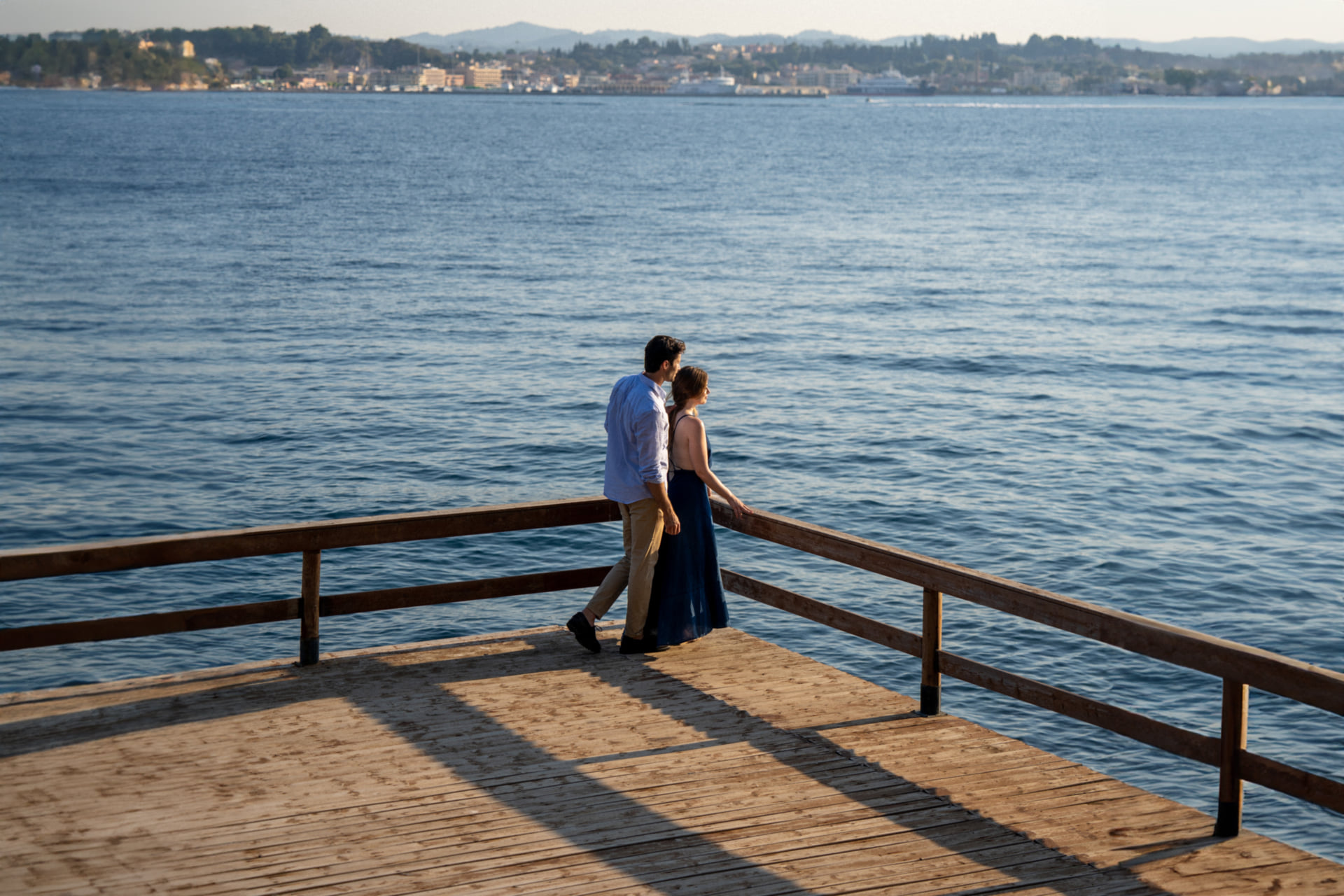
If you do choose to visit during July and August but want to make your holidays in Corfu more sustainable, a good solution is to extend your stay. It means you’ll have more time to visit the landmarks in the Old Town and enjoy the sights without adding to the crowds. For example, start your walking tour of the Old Town first thing in the morning or in the evening (avoiding the midday heat) or visit Corfu’s most popular beaches in the later afternoon, having enjoyed one of the island’s many eco-friendly activities first. The longer you stay in Corfu, the more options you have. Added to that, fewer, longer trips throughout the year are better to reduce travel emissions.
Choose to stay in the less explored areas
Another great tip in any sustainability guide to Greece (and especially Corfu) is to avoid the best-known tourist spots when it comes to choosing where to stay. The best alternative is to stay in one of villages of Corfu. It’s the perfect way to immerse yourself in the local way of life and discover Corfu’s natural beauty. You’ll also be supporting local communities (cafes, tavernas, bakeries, grocery stores etc).
Likewise, if you're planning to see the whole island then why not change hotels? When you’re in the north, stay there. And vice versa when you’re in the south. It’s not just about limiting travel emissions and time on the road. It’s also about spreading the love and supporting local businesses.
Give Corfu’s superstar beaches the love they deserve
There’s a good chance you’ll have already been seduced by images of Corfu’s superstar beaches. The problem is, you’re not the only one. It’s the main reason why the likes of Paleokastritsa (and its surrounding beaches), Porto Timoni and the iconic Canal d’Amour in the north are as popular as they are.
So once again, the quieter shoulder months either side of peak summer (as well as spring and early autumn) are the best times to visit. You’ll still be able to swim in the sea. And if you’re the kind of beach-goer that likes the full summer heat on your body to get in the sea, you can still enjoy the setting and a sunset picnic.
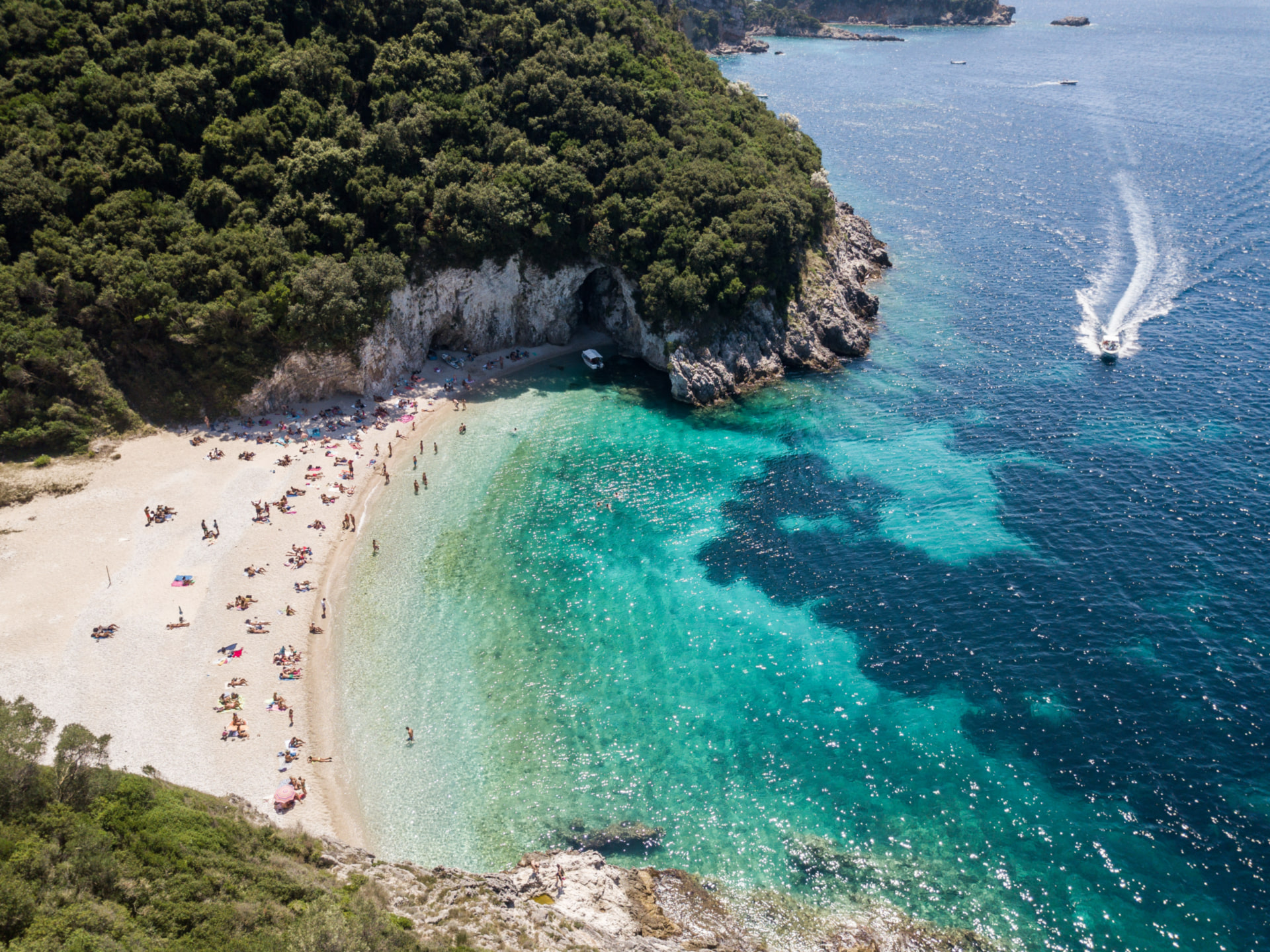
In peak summer, popular spots like Paleokastritsa Bay can fill with boats taking people to beaches along the coast. The answer is to enjoy your swim (with or without a boat) in the morning and in the busy hours (mostly midday) to enjoy alternative activities like visiting nearby villages (eg Lakones or Liapades) or sights like Angelokastro (the Byzantine’s ‘Castle of the Angelos’ on the hill overlooking Paleokastritsa Bay). Also, you might want to choose a beach that’s within walking distance. It all helps to keep boat traffic down. And if you are at the beach at a busy time, you can opt for a sustainable activity such as canoeing or kayaking or hiring a sea bike.
For the Canal D’Amour, the he sustainable solution is once again to enjoy the unique landscape early in the morning or late in the afternoon (when you’ll also get a sunset bonus).
And one last tip for Porto Timoni beach: You’ll have to walk 20 minutes or take a short boat trip to get there. And when you do, it’s very likely you won’t find a spot on the beach (which is very small) in peak summer. So our suggestion is to swim at neighbouring Agios Georgios Pagon and visit Porto Timoni in the afternoon.
Support local traditions & small museums
Seek out handmade souvenirs and local craftspeople
Every time you choose a handmade item over a mass-produced souvenir, you’ll be supporting a local craftsperson or artist. Not just that but you’ll be helping to keep alive generations-old traditions and rewarding small businesses with a small environmental footprint.
A great initiative is the Corfu Design Route. It was made by local creators and includes workshops and shops selling handcrafted items all over the island. The ceramics workshop of Mirto Zyrini (specialising in contemporary designs), the Patounis Soap Factory (making olive oil soaps since 1891) and Corfoot (selling handmade children's shoes) are all gems in the Old Town, as are Salty Bag (specialising in bags made from the sails of sailing boats) and Ancient Greek Sandals. Outside town, the handmade scented candles made by Choe are another reason to visit Kanakades village.
Beyond these, there are plenty of handmade souvenirs for sale in Corfu town and in some villages. These include jewellery and memorabilia inspired by the Corfu landscape and natural local products, as well as shoes, stationery and herbal cosmetics.
Visit small museums & cultural sites
There are so many cultural attractions in Corfu that it would be easy to focus only on the highlights, like the Old and New Fortresses in the Old Town and the likes of the Achilleion Palace (built in the 19th century by Empress Sissi of Austria) and Mon Repos (the neoclassical estate built by British High Commissioner Frederick Adam for his Corfiot wife). But responsible travel in Corfu is all about looking beyond the landmarks. And it’s at the smaller museums and cultural attractions that you often get to know the island a whole lot better. At the same time, you’ll be helping to preserve local history.
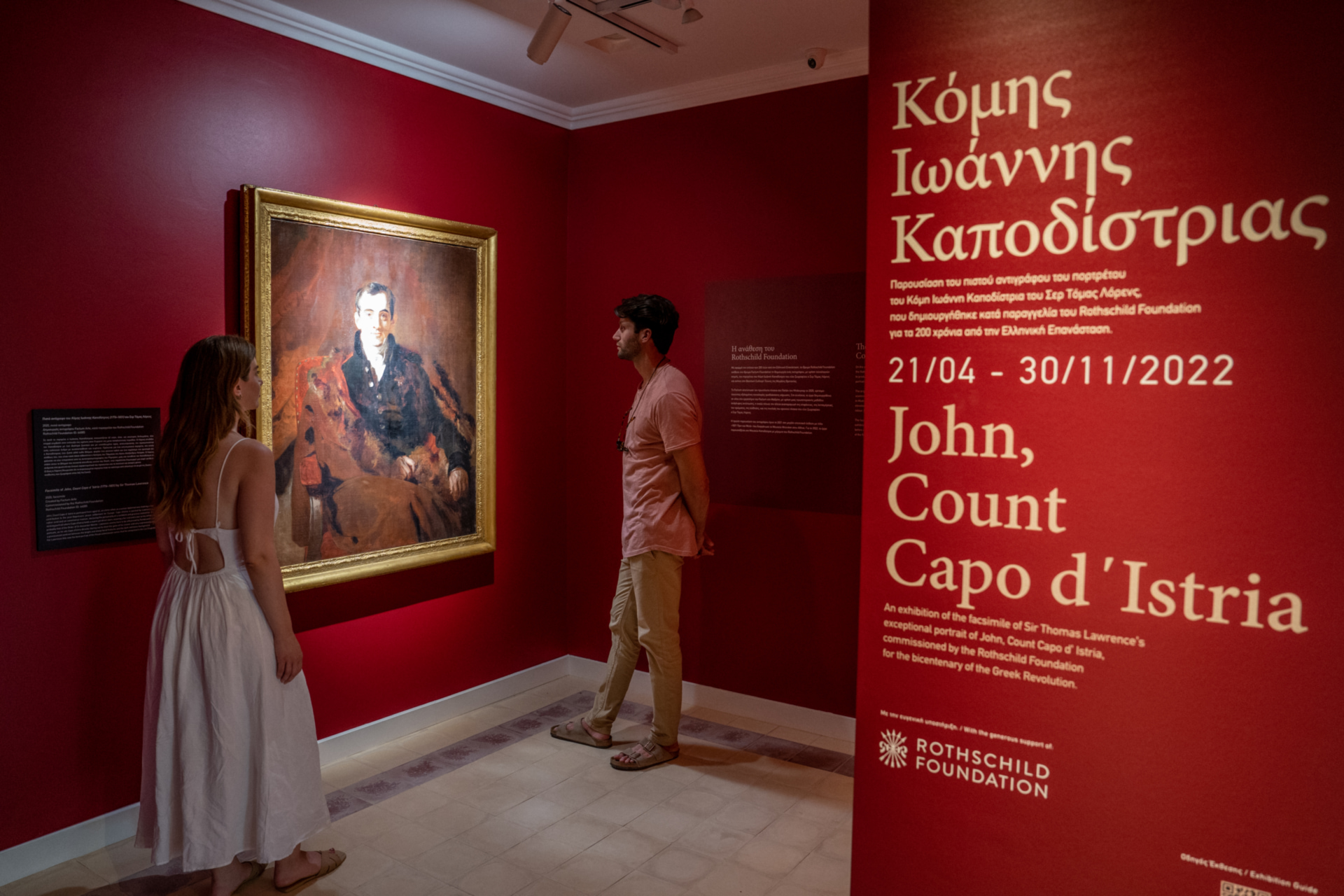
Some gems to put on your radar:
- The Corfu Art Gallery, created to exhibit the private collection of local engineer and collector Michail Aggelos Vradis, with paintings by local artists from the 19th, 20th and 21st centuries.
- The Museum of the Philharmonic Society of Corfu, containing rare musical instruments, photographic material, audio documents and artwork that tell the story of Corfu’s oldest philharmonic orchestra.
- The Archaeological Museum of Corfu, with antiquities from the ancient city of Kerkyra and the rest of the island, from the Prehistoric Period to Late Antiquity, including the monumental pediment of the Temple of Artemis.
- The Antivouniotissa Museum, in the church of Panagia Antivouniotissa, featuring around 90 post-Byzantine icons and other artefacts that highlight the role of Corfu in the development of Greek ecclesiastical painting.
- The Casa Parlante, a classical mansion in the old town that recreates the daily life of the island's aristocracy in the 19th century.
- The Dionysios Solomos Museum, in the house where Greece’s national poet and author of the poem that became the national anthem lived and worked from 1832 until his death.
- The Serbian Museum, with artefacts from the large number of 150,000 Serbian soldiers who found refuge in Corfu during the First World War.
- The Banknote Museum of the Ionian Bank, with a large number of banknotes issued by the Ionian Bank from 1839 to 1920 as well as the first banknotes of the Greek State from 1831.
- The Museum of Asian Art, in the Palace of St Michael & St George, a totally unexpected museum in Greece, with fascinating artefacts from Japan, China, Korea and Southeast Asia, as you’ll discover in our podcast.
- The Municipal Art Gallery of Corfu, in the western wing of the Palace of St Michael and St George, including a collection of works from prominent 19th-century Corfiot artists and others.
- The Kapodistrias Museum, about 6.5km outside Corfu town, where you can learn more about the life and family of Greece's first governor, Ioannis Kapodistrias.
- The Folklore Museum in Sinarades, in central Corfu, recreating a typical middle-class Corfiot household from the 19th century.
- The Donatos Paipetis Olive Museum, in the village of Kynopiastes eight kilometres west of Corfu town, a former traditional olive press with a collection of tools and machinery.
- The Castellino building in Kato Korakiana, an annex of the National Gallery, with around 150 paintings and sculptures that form part of the national collection and works from the Ionian School (which you can learn all about in our podcast).
- Lastly, some open-sight archaeological sites (with free entry): Kassiopi Castle, the Byzantine Fortress of Gardiki and Angelokastro.
Be sustainable with all your activities in Corfu
Show Corfu’s horses & donkeys the love they deserve
Like many Greek islands, Corfu has a long history of interaction between locals and domesticated animals. And in rural communities, these were mostly horses and donkeys, which can still be an integral part of the daily lives of locals.
If you want to go horse riding or take part in any other horse-related activities, please use your judgement. Be sure that the animals appear well treated by their owners and that aren’t suffering in any way. And remember that you wouldn’t want to be walking in the midday summer heat. So pick an appropriate time of day.
To show the donkeys of Corfu the love and respect they deserve, visit the Corfu Donkey Rescue, around 20km north of Corfu town. It is a sanctuary for donkeys and other rescued animals that, as the centre says, gives them a peaceful life and allows them to retire with dignity. You’re not allowed to feed the donkeys but you can pet them and, of course, make a donation.
Tip: The dirt road to the Donkey Rescue is quite rough, so park your car 1km away and enjoy the walk.
Pack your binoculars to go birdwatching
Corfu is home to more than 120 species of migratory and resident birds, most of which are concentrated in two Natura 2000 protected biotopes. Alikes Lefkimis and Lake Korission are lagoons in the south that are favourites with birdwatchers hoping to spot cormorants, swifts and swallows, as well as birds of prey like hawks, buzzards, and kestrels and various types of owl. (Even if you don’t see a Scops Owl, you’re likely to hear their distinctive call at night.) But the stars of the show are without doubt the flamingoes that appear in both wetlands each year, especially in spring and autumn, the best seasons for birdwatching in Corfu. It’s a must for every eco-friendly traveller in Corfu.
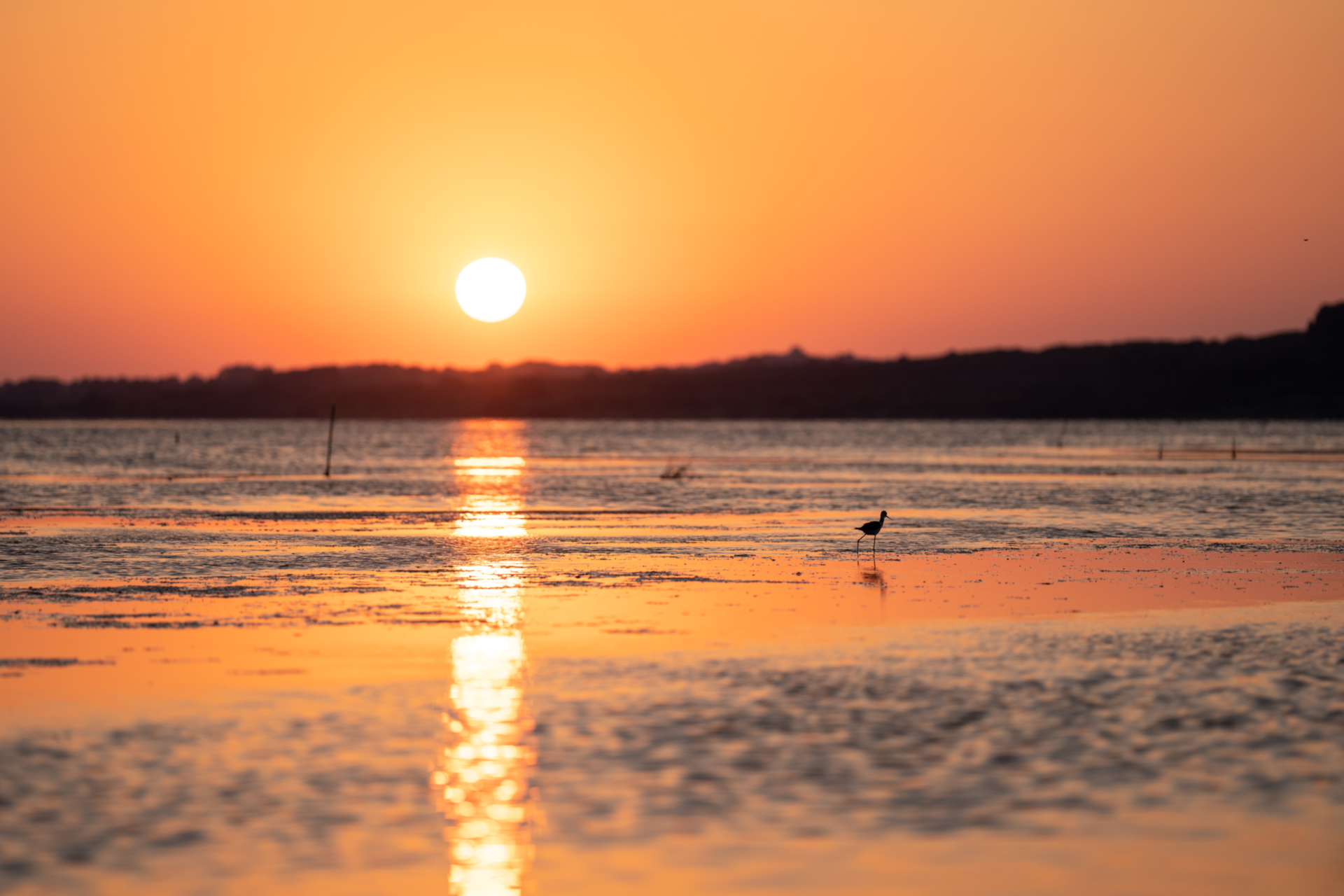
Hit the hiking paths of Corfu
Hiking hits the spot every time for the sustainable traveller. If you follow the basic rules for all outdoor activities, there’s no better way to discover Corfu’s natural treasures. There are marked hiking trails all over the island, many of them part of the Corfu Trail, a local initiative covering more than 200km. So wherever you are on the island, you'll find something to suit your mood.
Some paths take you past monasteries and into mountain villages, while others head along sandy beaches and through olive groves. All you just need is a decent pair of walking shoes and the usual hiking gear: decent shoes, hat, sunglasses, water bottle etc. And a pair of binoculars, especially if you pass one of the wetlands.
Alternatively, there are great mountain bike trails in the foothills of Mount Pantokrator, Corfu’s highest peak. One starts at the medieval village of Palea (Old) Perithia, which is deserted except for some family-run tavernas serving traditional dishes. Or you can explore the area around Lake Antiniοti in the far north, another spot with great birdlife.
A final tip if you’re into running: the Corfu Mountain Trail organises races over various distances (around the island and in the Old Town) every May.
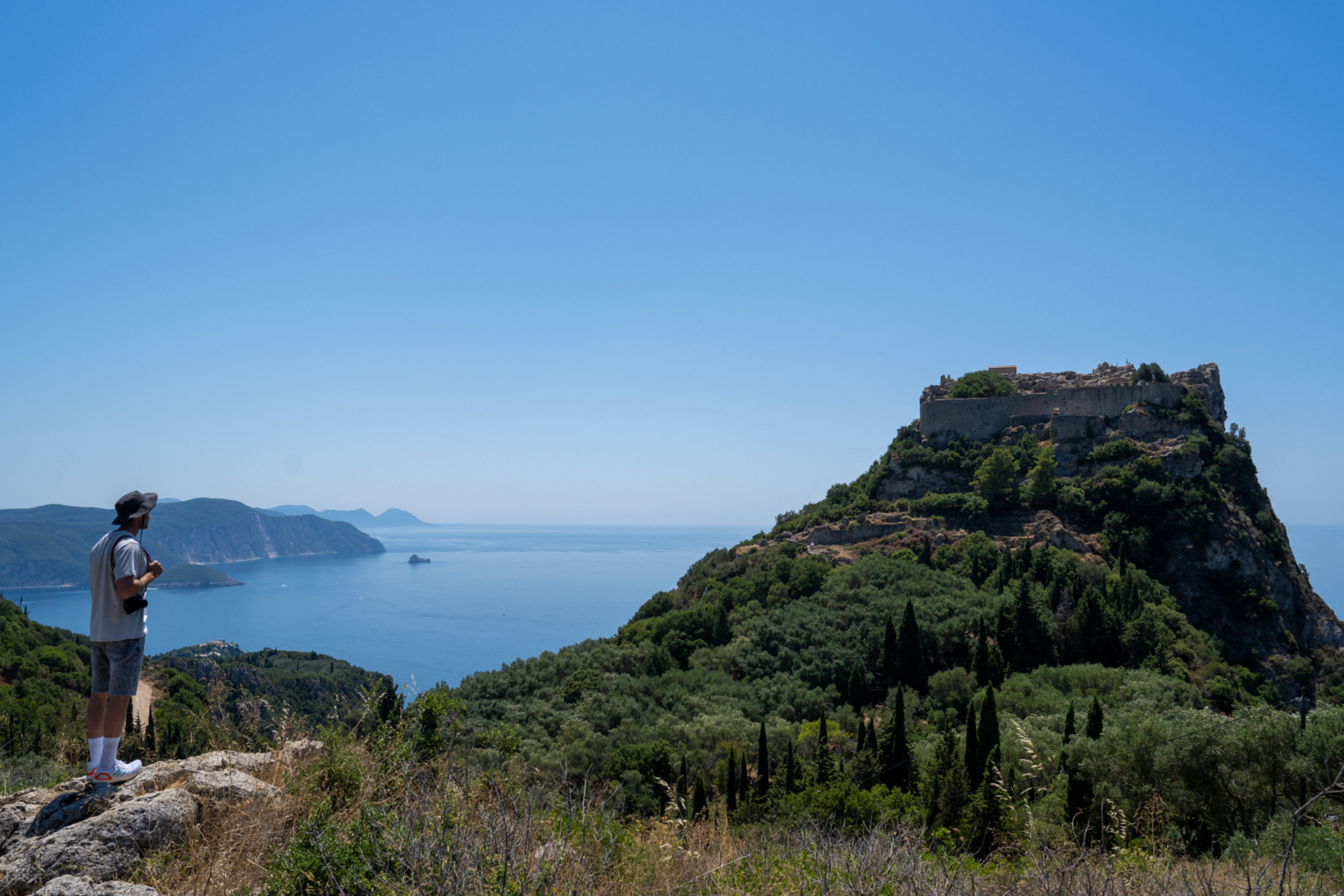
Go wine tasting on a vineyard tour
Corfu has been producing wine for centuries. In fact, there were once vineyards all over the island, but they were replaced by olive groves by the Venetians, who exported the olive oil. But winemaking in Corfu is making a comeback, which means that visiting a vineyard and learning about the local grape varieties helps Corfu reconnect with an important part of its history. It also supports local winemakers and is another reason to visit in late summer and autumn, during the harvest and bottling period, or in spring when the vineyards come alive.
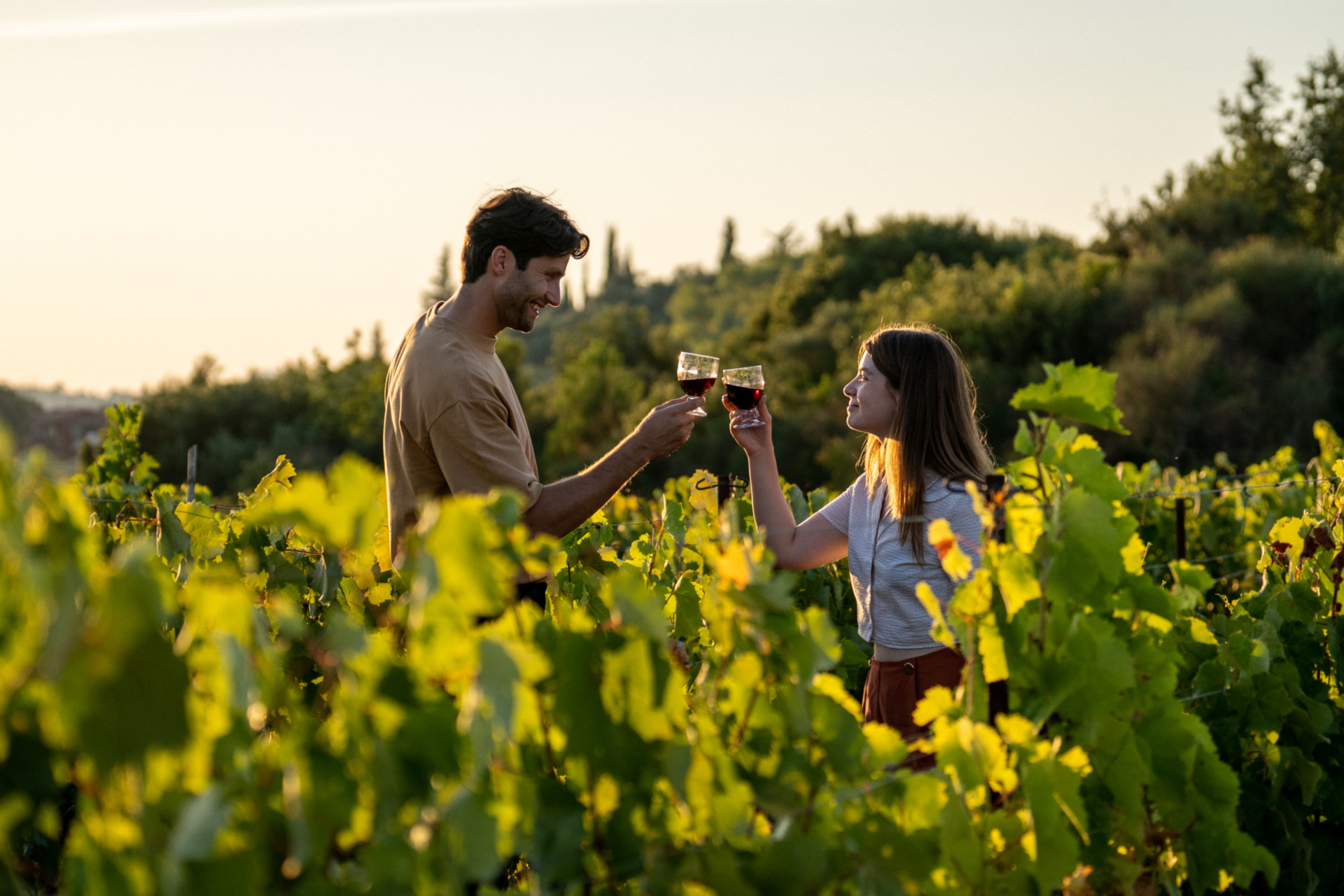
There are two Protected Geographical Indication areas in Corfu (Kerkyra and Halikouna) and a selection of wineries that offer vineyard tours and wine tasting, where you can learn more about the indigenous white Kakotrigis grape (which accounts for the bulk of production) and the Skopelitiko grape (for reds and rosés).
Vineyards that offer wine tasting include:
- Theotoky Estate (Ropa Valley, including a small museum)
- Ambelonas Corfu (Karoumpatika, including a small museum and restaurant)
- Goulis Winery (Liapades)
- Pontiglio (Lefkimi)
- Borovino Wine (Lefkimi)
- Nicoluzo Estate (Ano Korakiana)
- Livadiotis Winery (Halikouna)
Learn everything about Corfiot olive oil
Thanks to the Venetians, there are an estimated four million olive trees in Corfu and numerous olive mills you can visit. Some have even kept the traditional millstone and cold press extraction techniques of old (adapted to today’s standards).
In Agios Mattheos near the west coast, the Dafnis family run the Governor Olive Oil and Corfu Olive Tours (they also have an olive oil tasting bar in Corfu town). And nearby, in Vraganiotika, is the family-run Mavroudis Olive Oil, which has an olive oil museum in a stone building that is an excellent example of a pre-industrial horse-powered olive mill.
Near Paleokastritsa, the Konstantis family’s Enotis Olive Groves in Vistonas also has a museum and offers olive oil tasting experiences. And just north of Corfu town is Dr Kavvadia’s Farm. Started by a local orthopedic surgeon with a passion for producing olive oil, the farm is run by Dr Kavvadia’s grandson and focuses on the therapeutic qualities of olive oil. It offers olive grove tours and olive oil tasting where you will learn all about the antioxidant and healing properties of olive oil.
A final olive oil experience is to visit the Patounis Soap Factory in Corfu town which is part of the Corfu Design Route.
Enjoy a cooking class & farm visit
Eating out in Corfu is all about dishes made with home-grown produce, which is obviously ideal for any responsible traveller for whom food is all about the purity of the ingredients. But how about a cookery lesson where you’ll be taught how to prepare local dishes using ingredients straight from a family farm.
Ambelonas Corfu is a winery and restaurant in the hills 8km outside Corfu town. As well as wine tasting, it offers workshops focusing on the principles and techniques of Corfiot cuisine. The classes end in a five-course meal (cooked by you, of course) paired with local wines.
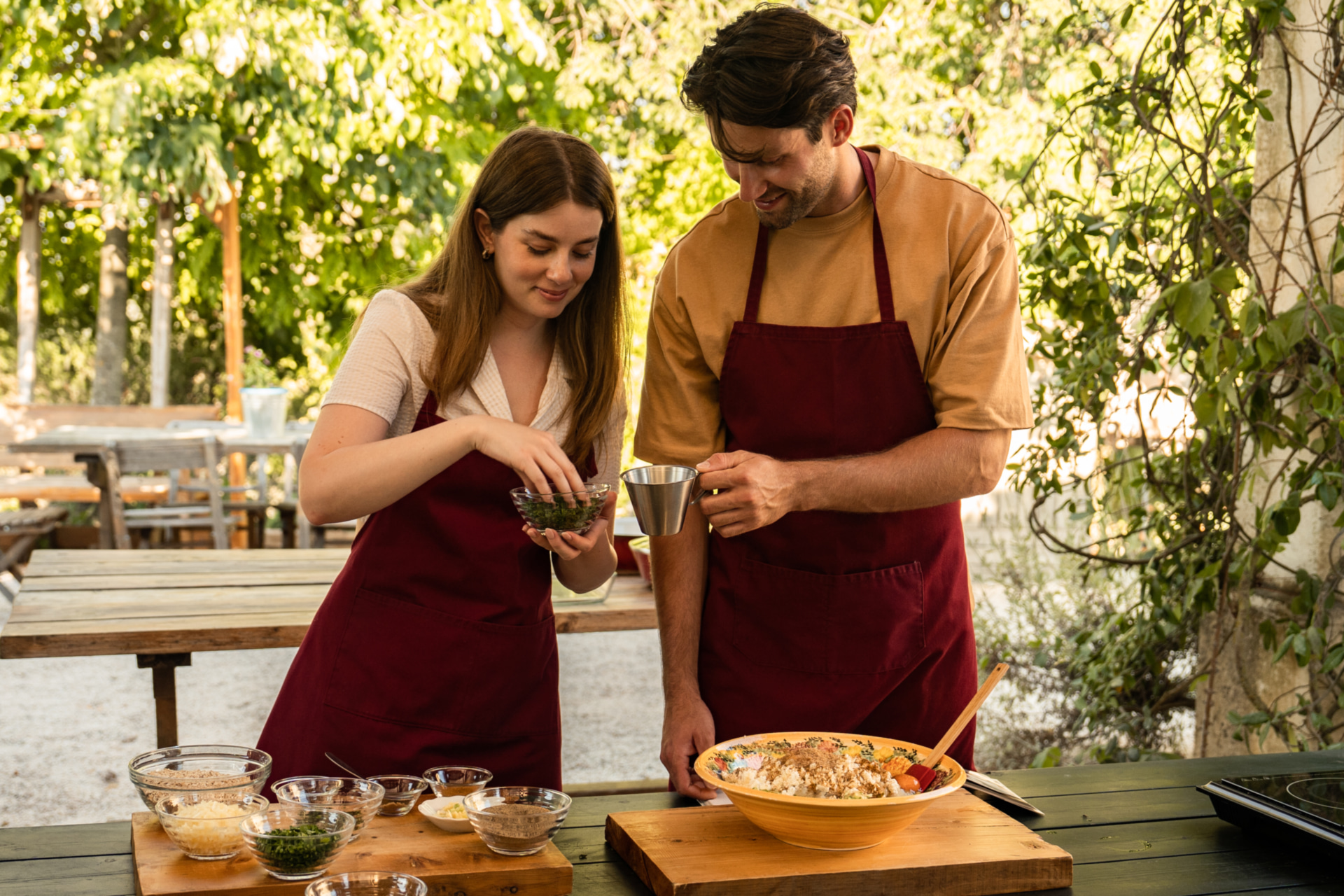
Likewise, Dr Kavvadias’ Farm and the Bioporos Organic Farm in Vrakaniotika have cooking classes where you prepare traditional dishes with organic produce from the farms’ vegetable garden.
And the “Herbal Walks” and workshops offered by Rodaka in Korakiana village teach you all about local herbs: how to identify them and when to add them to dishes to make them taste authentic.
Fill up on authenticity on a day village hopping
Visiting the villages is where you learn all about Corfu’s deepest traditions and are introduced to locals going about their daily lives. Everything about the villages – the food, the handmade crafts, the architecture – feels even more authentic, precisely because it is. By supporting local craft shops and traditional kafenia (cafes), you're helping to preserve these important elements of Greek culture and encouraging locals to stay in the villages rather than seek work elsewhere.
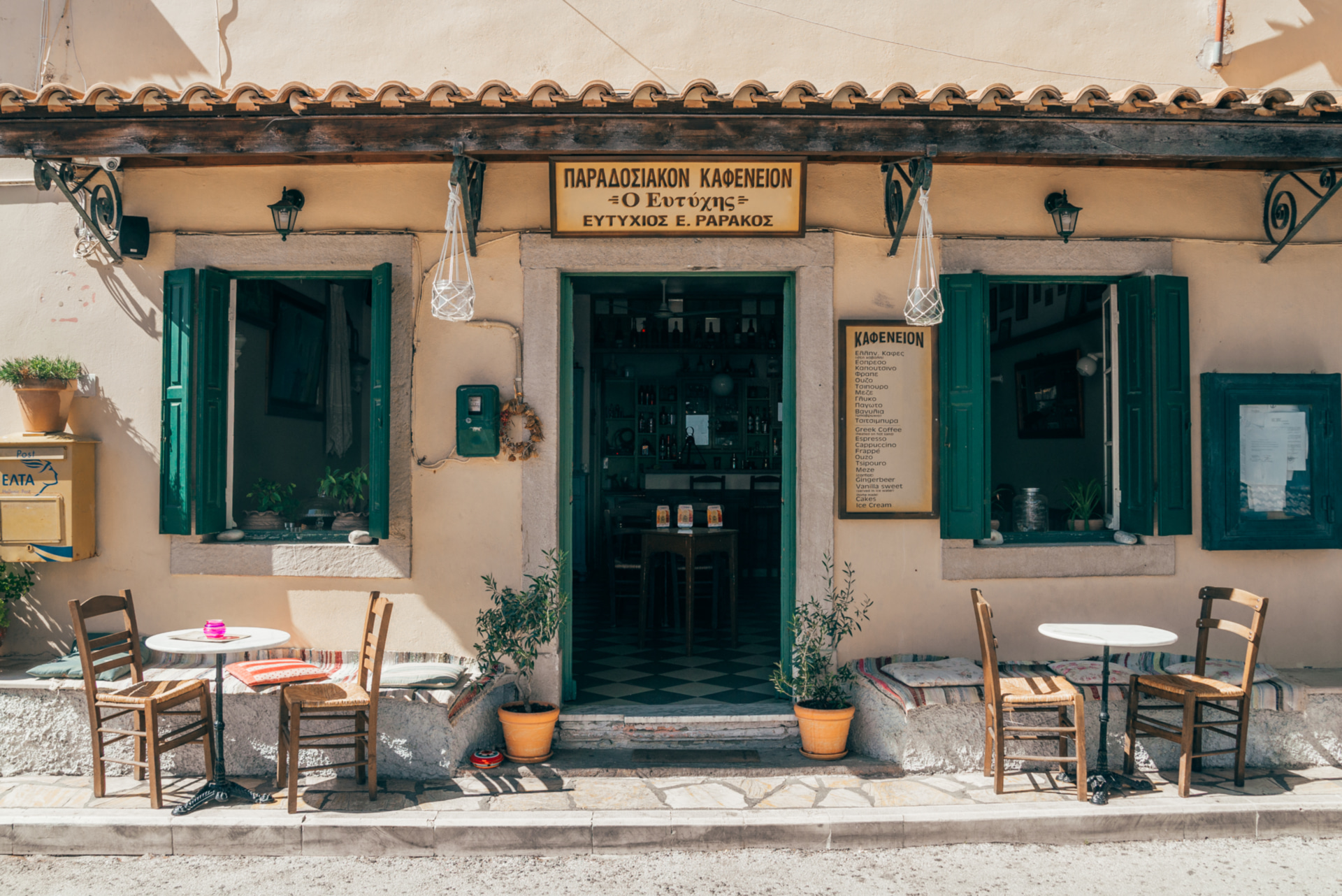
There are villages all over Corfu. Those in the hilly interior are often surrounded by olive groves and those near the coast can be combined with a day at the beach. Many date from the 13th and 14th century Venetian occupation (look out for the reds and ochres, as well as the arches and tiled roofs). What they all have in common is that they offer peace and tranquility whatever time of year you visit, and are an ideal base for outdoor activities beyond the summer months.
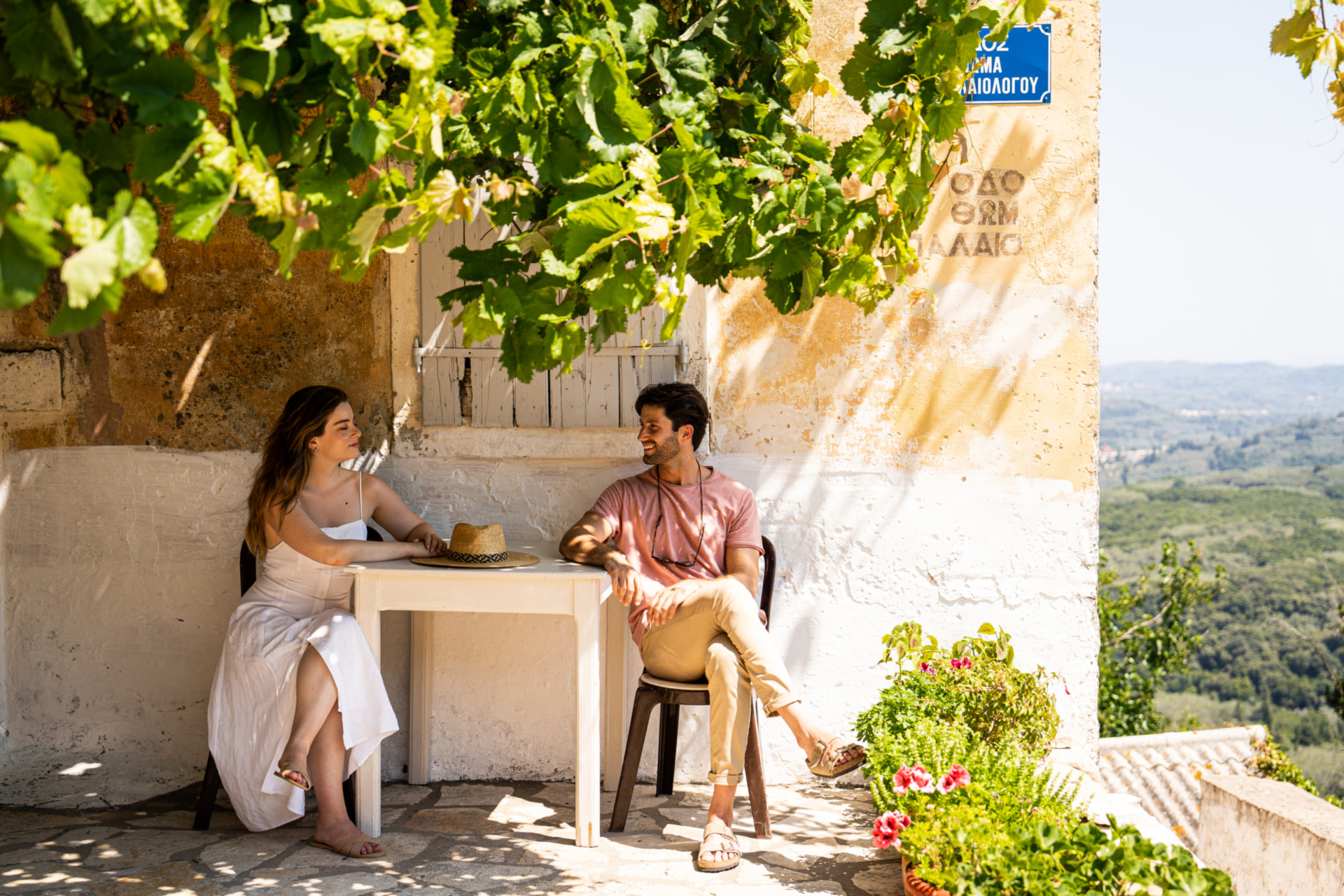
All of the highlight villages of Corfu are wonderful addition to a holiday and other village gems include:
- Liapades: A traditional village in northern Corfu with a choice of places to stay and tavernas and a good base from which to explore the small beaches and coves along the west coast.
- Doukades: Close to Paleokastritsa, with small tavernas and alleyways and a picturesque square with a plane tree.
- Skripero: In the heart of northern Corfu and known as Karlakohori (or the village of the frogs) in the local dialect.
- Sinarades: A picturesque village on the west coast opposite Corfu town, with colourful houses and a small folklore museum that is worth visiting.
- Nymfes: A charming village in northern Corfu that attracts visitors because of the short walk to the nearby Nymfes waterfalls.
- Spartilas: A traditional village with narrow streets and a great sea view on the south side of Mt Pantokratoras, in northern Corfu.
Go green with your sea fun
An easy sustainable activity in Corfu is to go green by the sea. There are plenty of options that have little or no impact on marine life and allow you to appreciate your surroundings even more. We’re talking stand-up paddleboard (SUP), hiring a sea bike or kayak, or going scuba diving at a certified dive centre. You might be brave enough for paragliding or paratriking? Or maybe you just want to snorkel, which you can do at every beach in Corfu (although you’ll find the clearest and most interesting water for snorkelling in the rockier north).
We’ve picked out some highlight beaches and locations where you can hire equipment for:
- SUP: Halikounas, Kalami, Dassia
- Kayaking: Agios Gordios, Paleokastritsa
- Scuba diving: Sidari, Nisaki, Paleokastritsa, Agios Georgios beach, Marathias, Acharavi, Ermones
- Paragliding & Paratriking: On the road to Ermones beach, Pelekas
- Sea biking: Paleokastritsa, Agios Giorgios Pagon, Dassia, Chalikounas, Sidari, Agios Spyridonas beach in Paleokastritsa
Go big on the local cuisine
Learn to order like a local
Our final tip in your sustainable travel guide to Corfu is to learn as much as you can about the local food before you arrive. You'll recognise the local dishes and learn how to order like a local in the tavernas. Also remember that tavernas and cafes in the villages source their produce from local farmers. So supporting them means supporting the wider area.
The olive oil and wine are likely to be local and most restaurants and bars serve Corfiot beer. The ginger beer (tsitsibira) definitely will be local. And other local products to look out for are kumquat (in various forms, including in liqueurs offered at the end of your meal), noumboulo (thinly sliced, cured pork tenderloin), mandoles (caramelised almonds), mandolato (a soft nougat bar containing honey), sykomaida (a fig paste with grape must wrapped in vine or fig leaves) and local honey and butter.
Local dishes and sweets to look out for:
- Bolseviki: Multi-layered, dripping in syrup and covered with a thick layer of Serrano cream. It was inspired by the hussanka hat worn by Bolshevik proletariats… hence the name. (bol-se-vìki)
- Kolombines: One of the two sweet breads (the other is fogatsa) traditionally made for Easter buns in Corfu (ko-lom-bìnes)
- Pastitsada: Beef or rooster casserole with a traditional spice blend called spetseriko (including cinnamon, red chilli, allspice, nutmeg and cumin), served with pasta (pa-sti-tsà-da)
- Bourdeto: A spicy fish dish whose colour comes mostly from the hot red pepper (bour-thè-to)
- Sofrito: Pan-fried beef in a parsley and garlic sauce, sautéed in wine (so-frì-to)
- Bianco: Fish cooked in garlic-lemon sauce with potatoes, parsley and black pepper (bi-ànco)
- Tsigareli: Spicy fried mixed wild greens (Swiss chard, mustard greens, sorrel, nettles, dandelion etc) with onions, garlic, paprika, dill and tomato paste (tsi-ga-rèli)
Your guide to sustainable travel in Corfu
So what grabbed your interest in our sustainable travel guide to Corfu? Early or late summer? Or did we win you over with spring or autumn, especially the nature and food & drink experiences? Whatever you decide, thank you for your commitment to responsible travel in Corfu and Greece in general.
Ikos Resorts: Redefining Sustainable Luxury
With sustainability at the core of its operations and hospitality culture, Ikos Resorts is constantly striving to reduce its carbon footprint, energy, water consumption and waste production, and enhance its positive impact on local ecosystems, while also upgrading the unparallel experiences it offers its guests. As part of the Ikos Green sustainability program, Ikos Resorts are carbon neutral, while investing in renewable energy, in the electrification of facilities and fleet, in AI-based technologies and advanced waste management, setting new standards for eco-friendly hospitality.
Pioneering in circular economy, Ikos Dassia in Corfu was the first to develop a zero-waste to landfill programme. With the aim to be zero-plastic and zero-waste to landfill by the end of 2024 across all properties, Ikos Resorts is consistently reducing its waste, while recycling over 50% of its waste, having developed 20 different recycling streams.
Renewable energy is key to Ikos’ sustainability strategy. All resorts are powered by 100% renewable electricity, contributing to the global effort to tackle climate change, and invest in renewables (eg. solar parks) with the aim is to become net-zero by 2030.
Sustainable procurement is also a key pillar of the Ikos Green strategy. Over 90% of cleaning detergents are eco-labelled, while almost 60% of the products at Ikos hotels come from local or national farmers and businesses, thus supporting local economies and reducing carbon emissions associated with transportation.
Furthermore, Ikos works closely with local NGOs to protect wildlife, promote marine conservation, and support vulnerable social groups. In this context, Ikos has designed unique eco- activities, inviting its guests to connect with nature and embrace sustainable travel.
Ikos Resorts has received numerous accreditations and global awards for its sustainability practices, such as the Green Key certification and ISO 14001:2018. The Ikos beaches are awarded with the prestigious “Blue Flag” eco-label.
Driven by its vision for a sustainable future, Ikos redefines luxury travel with significant benefits for the ecosystems, its people and all stakeholders.
Discover Greece Your Way
Discover authentic local experiences and secure your bookings for activities and tours with our official online rates.
Best of Corfu: Half-Day Private Sightsee...
Classic Olive Tour by Corfu Olive Tours
Corfu: Explore More in South Route
Durrell’s Family: A scenic Cinematic Tou...
Taste Corfu: Corfu Private Food & Histor...
Discover the highest-rated ground transportation services for travelers, based on reviews across Google, Tripadvisor, and Trustpilot.
Welcome Pickups offers a seamless, safe, and enjoyable experience for travelers
Trained Drivers
Hand picked & trained drivers
Low prices
Same price as a regular taxi from the line
Arrival monitoring
Drivers are always on time
Quality support
24/7 email & phone support

